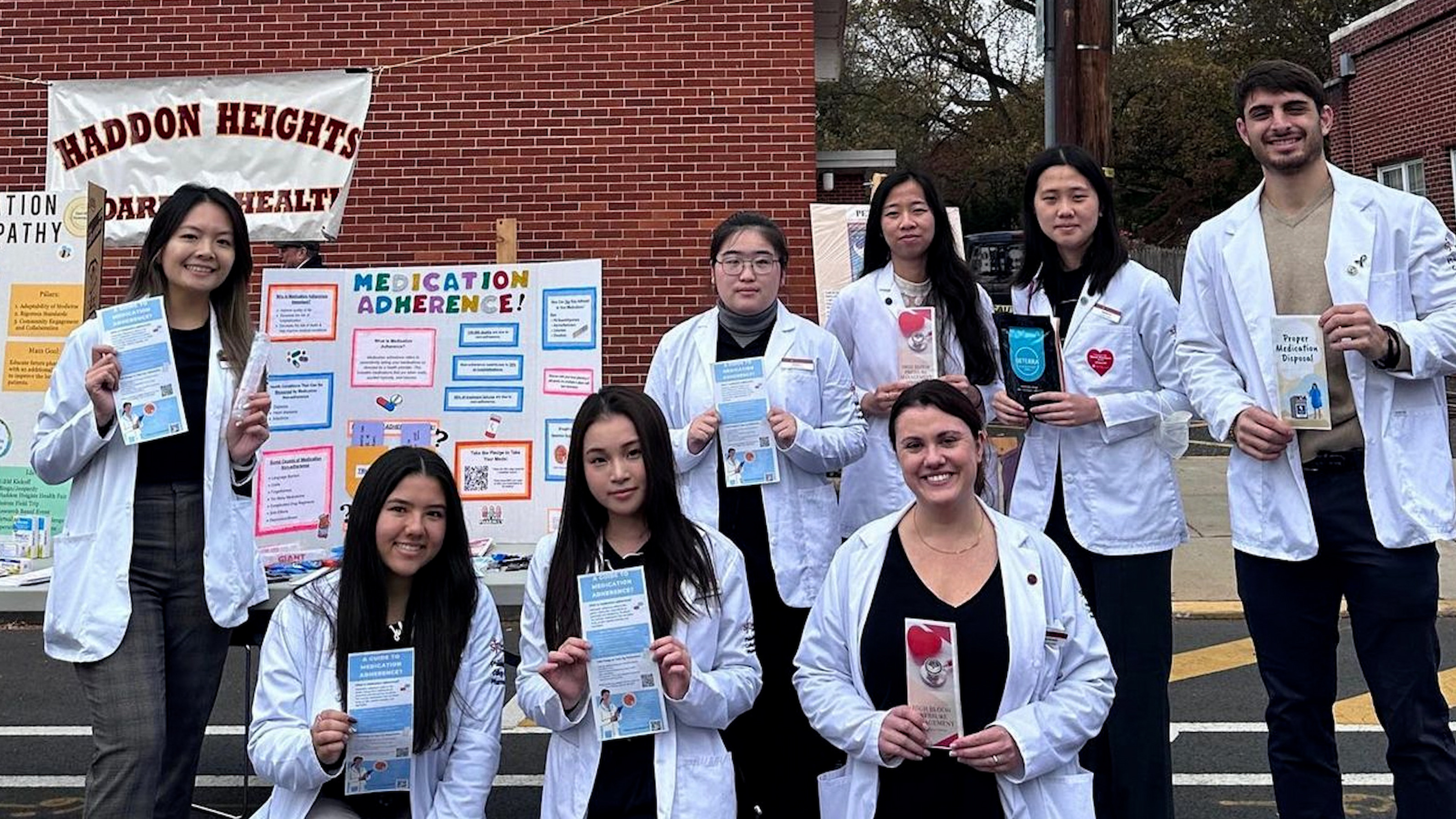Food Marketing Students Help Bring Italian Product Stateside
Pomi, an Italian tomato sauce company, asked Saint Joseph’s food marketing students to strategize the launch of their product into U.S. markets. Our Hawks did not disappoint.

Saint Joseph’s food marketing students are no strangers to competition, so when Pomi, an Italian tomato sauce company, approached them for ideas on launching their product into U.S. markets, the students put their noses to the grindstone.
It’s quite commonplace for Saint Joseph’s food marketing majors to find themselves challenged to come up with theoretical case studies on launching products into new markets for multi-million-dollar corporations. According to John L. Stanton, Ph.D., professor and chair of food marketing at Saint Joseph’s, these students’ ideas are taken quite seriously.
“I can’t even count on one hand how often I see ideas that were theoretically presented by our students make it into the launch of an actual product,” recalls Stanton. “Our students are competitive and creative. They’re out to win.”
I can’t even count on one hand how often I see ideas that were theoretically presented by our students make it into the launch of an actual product ... Our students are competitive and creative. They’re out to win.
John L. Stanton, Ph.D., professor and chair of food marketing
For the Pomi project, students were split into groups of four to work out their strategies. The winning group would receive a $1,000 cash prize from the company. But it wasn’t an easy task — the students faced some very clear challenges with the foreign product.
For starters, Pomi tomato sauce is what it is — sauce. The label boasts its one ingredient, which has appeal when considering product purity, but could fail to entice a shopper looking to add some pizazz to their pasta dishes.
Another challenge was the sauce’s ultra high-temperature (UHT) packaging. UHT packaging is common around the globe to keep fresh products that typically need refrigeration shelf-stable, like milk. UHT packaging is not commonly utilized in the United States. Since most U.S. consumers look for cans or jars when on the hunt for tomato sauce, Pomi’s packaging runs the risk of making it unrecognizable on supermarket shelves.
At the end of 2021, Pomi’s U.S. representatives heard presentations from each student group participating in the challenge and chose a winning team.
Dewey Bunch ’22, Harper Gibbons ’23, Jack Failing ’23 and Abby DeRenzo ’23 took the prize after impressing the judging panel with an array of recommendations for the company.

First, the group recommended Pomi cross-merchandise its product in the pasta aisle with a standalone display. Along with this display, there would be a “shelf-talker,” which is a small piece of signage attached to the display advertising and explaining the product to consumers as they pass by.
Next, the group made a hefty suggestion — change the name of the product. Instead of Pomi tomato sauce, maybe it would make more sense to call it a “tomato sauce base”?
“This was a big deal to the Pomi executives in attendance,” notes Gibbons. “They said they’d been trying to come up with an alternative name without success for quite some time and this one was perfect.”
[The Pomi executives had] been trying to come up with an alternative name without success for quite some time and this one was perfect.
Harper Gibbons '23, food marketing major
Based on their own market research, Gibbons and her teammates also suggested creating a tomato basil sauce, as their data showed American consumers are less likely to purchase 100% tomato sauces. Then, they suggested Pomi roll all this out in their port cities — New York, San Francisco and Miami.
“This was such a puzzle for each of the teams,” says Stanton. “And Pomi was really committed to the whole project, which made them feel like they were actually accomplishing something, not just participating in an academic exercise.”
This kind of practical experience is what makes food marketing at Saint Joseph’s so unique — students get to see their work manifest in real-world campaigns.
“We have such phenomenal involvement in the food industry,” remarks Stanton. “When we do projects like this, we’ll get halfway through and I’ll start getting messages from the companies thanking me for how much they’re learning through our students’ work. I always tell them, the best is yet to come.”
Interested in getting involved in Saint Joseph’s one-of-a-kind food marketing program? Find out more about this program and its professional pathways.



